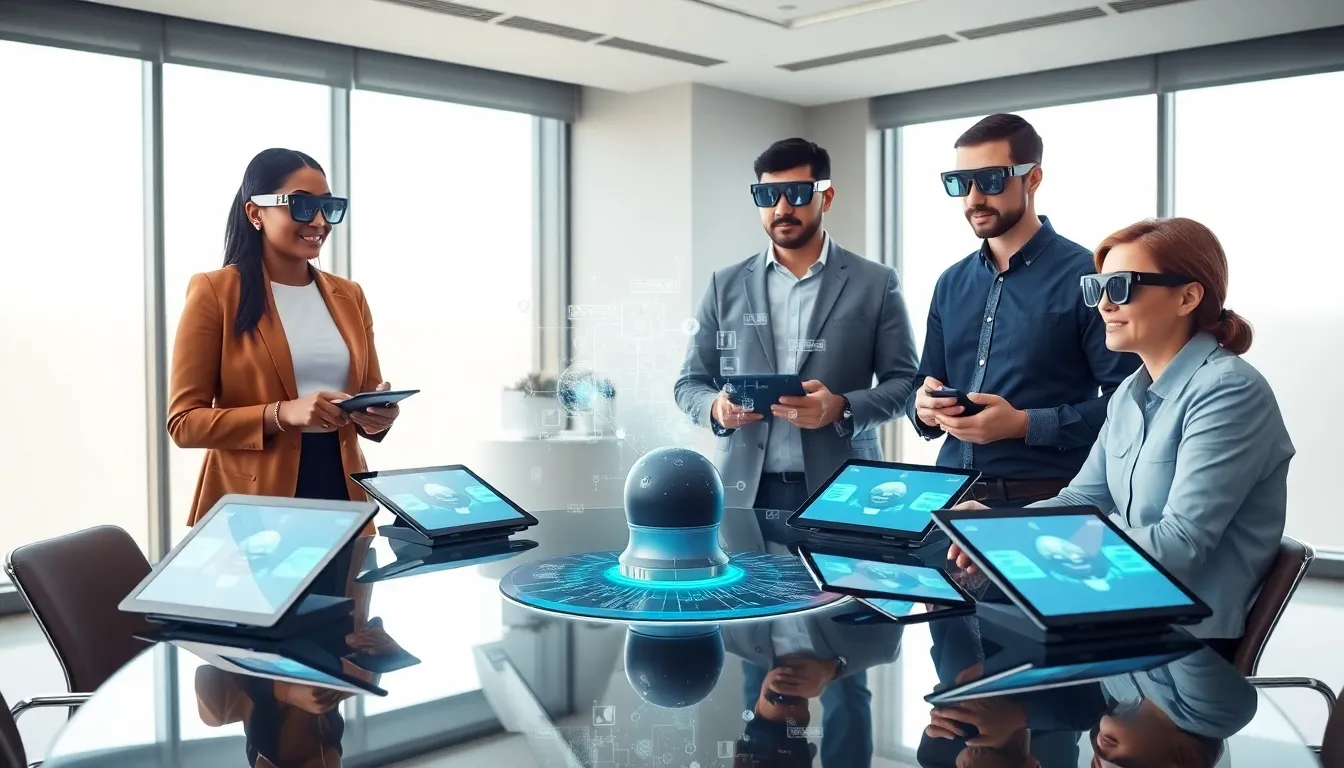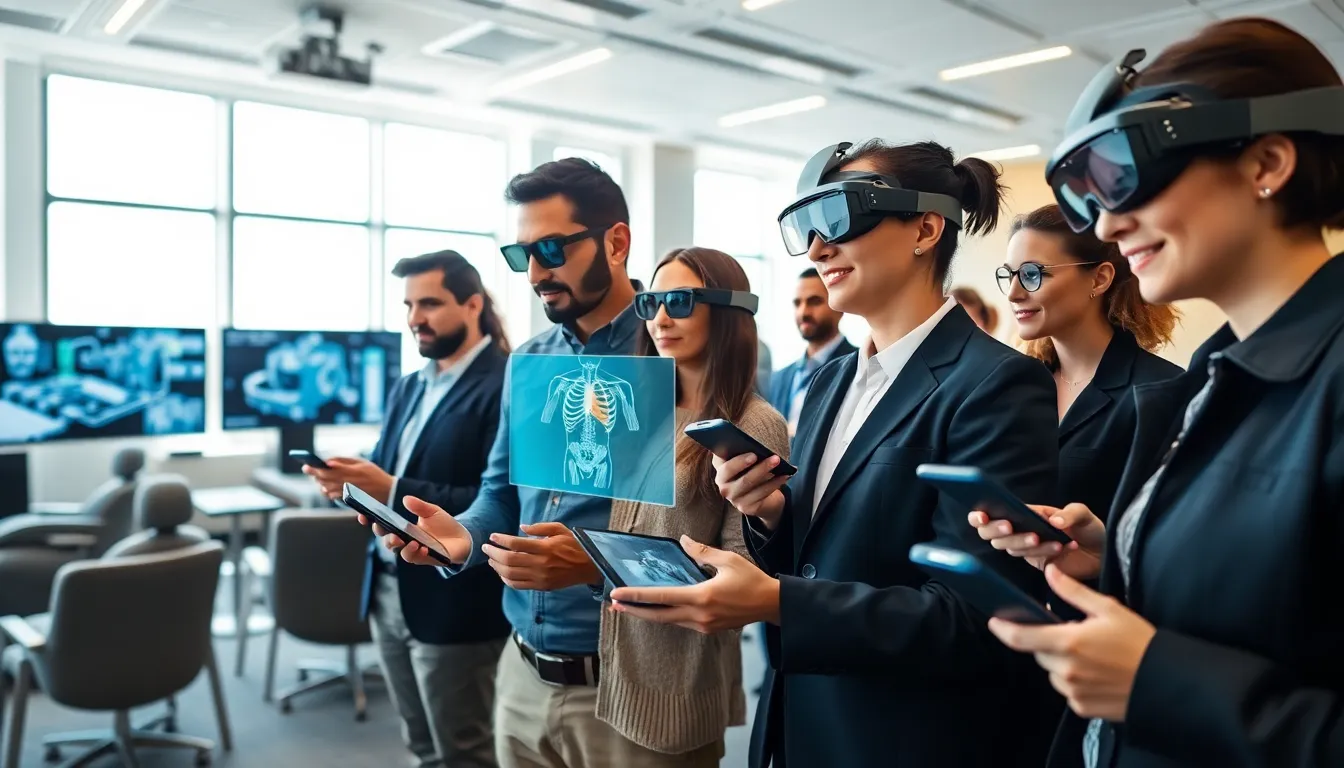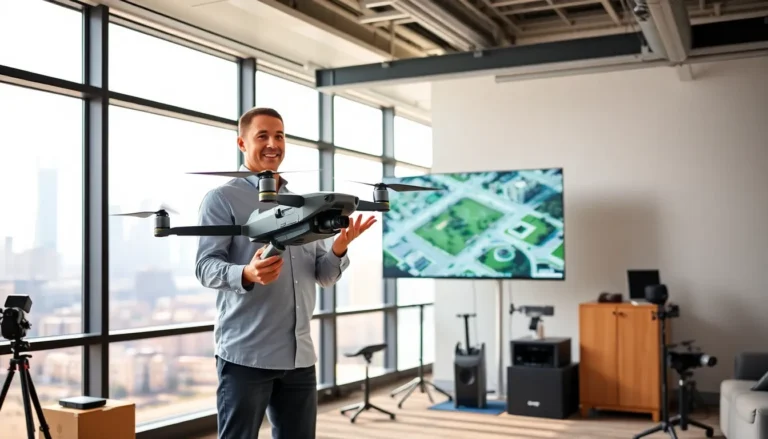Imagine stepping into a world where training feels like a video game. Yes, we’re talking about augmented reality (AR) training, where you blend the physical with the digital, enhancing learning experiences like never before. It’s not just about donning funky glasses: it’s about transforming how people absorb and retain information. Get ready to jump into the engaging universe of AR training and discover why it’s setting the stage for the future of workforce education.
Table of Contents
ToggleUnderstanding Augmented Reality

To grasp what augmented reality training is, one must first understand augmented reality itself. AR overlays digital content onto the real world through devices like smartphones, tablets, or specialized glasses. Unlike virtual reality, which immerses users in a completely virtual environment, AR enhances their real-world surroundings by adding layers of digital information. Think of it as giving your existing world a technological upgrade. It allows trainees to interact with visual cues or data points without losing touch with their physical surroundings, making learning more interactive and engaging.
The Evolution of Training Methods
Training methods have come a long way from traditional classrooms to digital platforms. Back in the day, learners relied heavily on textbooks and lectures, with limited opportunities for hands-on experience. Fast forward to today, and we see the rise of eLearning, simulations, and now, augmented reality training. This evolution reflects the wider digitization of society, where technology enhances educational methods. Organizations are increasingly moving away from conventional training models in favor of interactive solutions that cater to various learning styles, providing richer, more meaningful experiences for trainees.
Benefits of Augmented Reality Training
Applications of Augmented Reality in Training
AR training offers a plethora of benefits, primarily its ability to engage and immerse learners. For instance, in the medical field, AR can allow students to visualize anatomy in 3D while interacting with virtual organs right in front of them. In manufacturing, trainees can learn to assemble complex machinery with real-time feedback and guidance appearing overlayed on the physical components. This not only accelerates the learning curve but also enhances retention.
Industries Adopting Augmented Reality Training
Every sector can benefit, but certain industries are grabbing the opportunity with both hands. Aerospace and defense, healthcare, retail, and education are leading the way. For example, in retail, AR can train employees on product placement and customer interaction by simulating real-life scenarios. As these industries adapt, they’re paving the way for a more skilled workforce prepared to meet modern challenges.
Challenges and Considerations
Even though its numerous advantages, augmented reality training is not without its hurdles. One primary challenge is the initial investment in technology and training programs, which can be substantial. Organizations must assess whether the benefits outweigh these costs. There are also concerns about the technological gap: not all employees may feel comfortable with advanced tech, leading to disparities in training effectiveness. Also, content creation can be labor-intensive, necessitating ongoing collaboration between educators and tech developers to create high-quality AR experiences that resonate.
Future Trends in Augmented Reality Training
As technology grows, the applications of augmented reality training are only set to expand. Many predictive models indicate advancements in machine learning and artificial intelligence will integrate more seamlessly with AR, allowing for personalized training experiences. Learners may engage in assessments that adjust in real-time based on their performance, offering a tailored learning journey like never before. With continuous improvements in hardware and software, the future holds promises of even more dynamic AR training environments that push the boundaries of traditional education.





